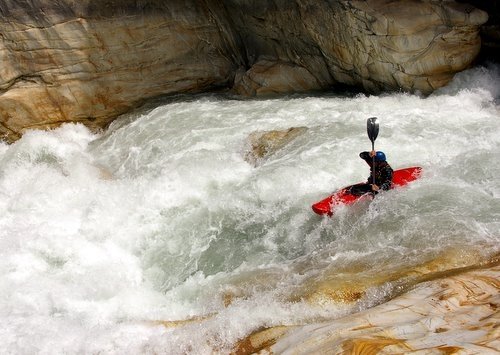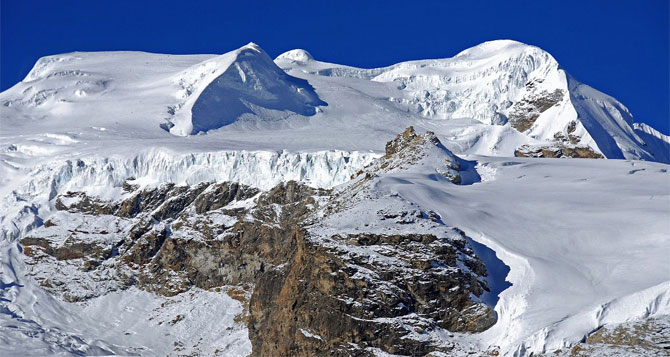Mt Kailash Overland Tour
Mt. Kailash - the most sacred mountain in the Tibetan Buddhist world is considered to be the centre of the universe. Uncannily symmetrical, this remote and remarkable peak is located in the far west of Tibet. For many it is a primordial image of a stupa/ choerten, crowned with a glacier and a perfect cone of pure snow. Mt. Kailash has arguably, the unique distinction of being the world's most venerated holy mountain while at the same time being the least visited. Being the sacred mountain of four different religions and over one billion people. Kailash is seen by no more than several thousand pilgrims every year.
The cosmologies and origin myths of Hinduism, Jainism and Buddhism refer to Kailash as the mythical Mt. Meru, the Axis Mundi, the centre and birthplace of the entire universe. The mountain was already legendary before the great Hindu epics, the Ramayana and the Mahabharata were written. Mt. Kailash is so deeply embedded in the myths of ancient Asia that for many it is the location of the strongest cosmic power.
Geologically Mt. Kailash was formed around 50 million years ago, whereas the Himalayas are considered to have evolved 10 million years ago.
In Sanskrit Kailas means luminous crystal. Hindus believe Mt.Kailash to be the abode of Lord Shiva. According to legend, the immortal Shiva is enthroned on the top of Kailash and the mountain is regarded as the location of exceptionally powerful transformation. Therefore a Hindu making the pilgrimage to Kailash and having a darshan (divine view) of Shiva's abode is to attain release from the clutches of ignorance and delusion.
Kailash is also sacred to the Jains, they call a hill near the Kailash formation Astapada, and that is the place where Rishaba, the first of the twenty-four Tirthankaras attained liberation. Followers of Bon, the pre-Buddhist religion of Tibet, call the mountain Tise and believe it to be the seat of the Sky Goddess Sipaimen.
In Tibetan history the famous yogi Milarepa won the mountain for Buddhists competing against the Bon master Naro Bon-chung. According to folklore, Milarepa's success thereby established Buddhism as the primary religion in Tibet. In return for Mt. Kailash, Milarepa gave to the Bonpos a nearby hill, the so-called Bonri. About one hundred years later, Gyalwa Gotsanga, opened the kora around Mt. Kailash for the public. On his kora he was led by heavenly beings including Dakinis and Taras that appeared in the form of various animals such as wolves and a female yak (“Dri”). They showed him the way around Mt. Kailash and led him the way to Dri ra Phuk for meditation.
According to legend, the Buddha is said to have magically visited Kailash in the 5th century B.C. Stories relate that an Indian master tried to move Mt. Kailash; the Buddha arrived with the 500 Arhats and rooted the mountain with four foot prints (Nails) that one can find nowadays imprinted in rocks on the kora around Kailash.
Buddhism is considered to have spread to Tibet, via Nepal and India, primarily in the 7th century AD through Guru Rinpoche ( Padmasambava). Tibetan Buddhists call the mountain Kang Rinpoche, the 'Jewel of Snow', and regard it as the body mandala of Korlo Demchog and his consort, Dorje Phagmo (Chakrasamvara and Vajrayogini). Three hills rising on the north side near Kang Rinpoche are believed to be the abodes of the bodhisattvas Manjushri, Avalokiteshvara and Vajrapani.
Circumambulation: Walking around the mountain (clockwise for Buddhists, counter-clockwise for Bonpos) is known as a kora, or Parikrama, and normally one kora takes three days for Western and Indian people. Some Tibetans do the 53 km circumambulation in a single day, where as other Tibetans will take two to three weeks for the kora by making full body prostrations along the entire way (about 25 000 prostrations). It is believed that a pilgrim who completes 108 koras around the mountain will gain enlightenment at the time of death.
Most of the Indian pilgrims will also take a ritual bath in the highly sacred Lake Manosaravar nearby. The word 'manas' in Sanskrit means ‘mind’ or ‘consciousness’; thus the name Manosaravar means ‘lake of consciousness and enlightenment’ (it also signifies the spirit of Brahma). In the Tibetan language it is called Maphamyumtso. Considered to be the opposite in quality to Manasarovar is Rakshas Tal, the Lake of Demons or the dark side of being. To ensure a complete pilgrimage, Tibetans also visit the Thirthapury nearby, a sacred VajraYogini place.
Pilgrimage to this great sacred and magical scenery is the most precious of pilgrimages for both Tibetan and Indian people, a journey they hope to experience at least once in a lifetime.
Western people could experience the journey in the following way:
In being together on such a demanding trip we will witness both the joy of encountering the vastness and purity of nature as well as the difficulties each person may face through travelling at high altitude. The vast open spaces may give rise to deep personal inner experiences, so certain undigested events may suddenly pop up in the mind. Therefore it is the opposite of a usual holiday or trek, where one usually tends to forget about home and the past. Here the journey may arouse memories and one might find oneself taking a conscious look at events in one’s life and realising how much one is connected to everything.
Therefore your pilgrimage can be a time to look into matters deeply, while enjoying an open and tolerant contact with others, knowing that each and everyone may be challenged to the outmost and, limited by personal capacity, is giving his or her best. To witness each other in this way is a most dignified way of sharing one’s being. That’s what I would call Yatra, true pilgrimage.
Itineraries
ITINERARY:
Day 01: Lhasa arrival.
Fly to Lhasa. Airport and take you to the Hotel. Later we try to cover few sightseeing places including bharkhor Market. Over night stay in Hotel.
Day 02: Lhasa
Sightseeing in Lhasa (Potala Palace, Jokhang Temple, and Bharkhor Market). We will take the tour in Lhasa while acclimatizing. Overnight in Hotel.
Day 03: Lhasa è Sigetse(3950m) 350 kms- 9 hrs
After breakfast in your hotel drive to Shigatse which is the 2nd largest city of Tibet. Built in 1447 by the first Dalailama the Tashillunpo Monastery in Shigatse is a very important monastery in China as it is known as seat of the Panchan Lama. Night stay will be at Hotel.
Day 04: Sigetse èSage (4550m) 450 kms- 10 hrs
We take an early morning drive to Saga, please note this will be a long drive but on the way we can make enough stop and lunch. Overnight in Hotel at Saga.
Day 05: Sagaè Dongbaè PRAYANG è MANSAROVAR (4550 m) 470 Kms 9 / 10 hrs (B,L,D)
This morning depart from Saga to Manasaravor, it is 470 km. The road is good and the trip can be complete in 9 / 10 hrs. There will be several river crossings and we drive past Mayum La Pass (4600m). The scenery is stunningly beautiful with panoramic views of the Himalayas. This is an auspicious day for all of us having first glimpse of the Holy lake Manasarovar and view of Mt. Kailash from The Horr Chu pass. Stay in Chiu Gompa, a beautiful place to be.
Overnight in GUEST HOUSE/Lodge at bank of Mansarovar.
Day 06: Rest day in Manasarovar, Havan Puja, tarpanam and Hike around.
Day 07: MANSAROVAR è DARCHEN 45 km driveè DIRAPHUK (4720m 7hrs trek
Morning puja and Havan and after breakfast Drive to Darchen(4600 metres high), Leave our Truck and extra luggage and Start of 1st day of Parikrama drive up to Tarboche and trek up to Diraphuk Gompa (north face of Kailash), and a close up view of Holy Kailash (North face). We head west in clockwise direction and after a few kilometres the trail climbs up to a cairn at 4730m from where the southern face of Mt. Kailash comes to view. Pony & Pony men will be waiting for passengers who have hired them. Porters hired by passengers will carry their bags etc. Yak will carry our goods and camping equipment. Start the Parikrama which is about 20kms.
Overnight in GH
Day 8: DIRAPHUKè ZUTHULPHUK GOMPA (4790m)
The 2nd day of Parikarma, which is very sensitive and every pilgrim talks about the most challenging journey throughout the Yatra. Parikarma continues and we trek (18 kms) up to Dolma la Pass, which is 5800m above the sea level. We will offer very short prayers at Dolma la. The weather is unpredictable in Dolma la Pass and at any time there is a possibility of a snowstorm. En-route, we can have darshan of Gauri Kunda (5630m) where Hindus worship and immerse themselves in the icy waters of the lake. Lunch as usual; we will camp in front of medicine Buddha Mountain near by Zuthulphuk Gompa. For those people who can't walk there will be option for Horse or Yak ride at extra cost. Overnight in GH
Day 9: ZUTHULPHUK è DARCHEN è Manasarovar è Sage
The 3rd day of Parikarma . After Breakfast, we will trek around 10 kms to complete the 3 days circuit trek of Mt. Kailash. We will be reaching at the point, where our jeeps will be waiting to drive us to Darchen to collect the rest of the passengers who could not do the Kailash Parikarma. Overnight in Manas. GH
Day 10: Sage è Sigetse 9 hours drive,Beautiful drive back from Saga to Sigetse
Day 11: Sigetse èLhasa (6 hrs) (B) 350 KM.
After breakfast we drive to Lhasa. Overnight stay in Hotel.
Day 12: Fly from Lhasa to Kathmandu (1:15 hrs)
Other Details
Includes:
--permits, entry fee, guide, van, budget hotel/ GH without meals, yak for luggage while 3 days’ kora
Excludes:
--china visa fee, airfares, meals, truck, etc
Package Duration: 12 days
Grade: Moderate
Culuture: Tibetan
Sight Mountains: Tibet
Main Attraction: For Tibetans, pilgrimage refers to the journey from ignorance to enlightenment, from self-centeredness and materialistic preoccupations to a deep sense of the relativity and interconnectedness of all life. The Tibetan word for pilgrimage, neykhor, means "to circle around a sacred place," for the goal of pilgrimage is less to reach a particular destination than to transcend through inspired travel the attachments and habits of inattention that restrict awareness of a larger reality........By traveling to sacred sites, Tibetans are brought into living contact with the icons and energies of Tantric Buddhism. The neys, or sacred sites themselves, through their geological features and the narratives of transformation attached to them, continually remind pilgrims of the liberating power of the Tantric Buddhist tradition.......Over time pilgrimage guidebooks were written, giving instructions to pilgrims visiting the holy sites and accounts of their history and significance. These guidebooks, neyigs, empowered Tibet and its people with a sacred geography, a narrated vision of the world ordered and transformed through Buddh














